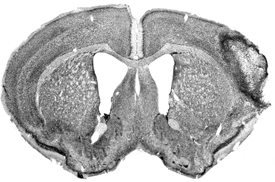UCLA Scientists Engineer Blood Stem Cells to Fight Melanoma
Researchers from UCLA’s cancer and stem cell centers have demonstrated for the first time that blood stem cells can be engineered to create cancer-killing T-cells that seek out and attack a human melanoma. The researchers believe the approach could be useful in about 40 percent of Caucasians with this malignancy.
Done in mouse models, the study serves as the first proof-of-principle that blood stem cells, which make every type of cell found in the blood, can be genetically altered in a living organism to create an army of melanoma-fighting T-cells, said Jerome Zack, the study’s senior author and a scientist with UCLA’s Jonsson Comprehensive Cancer Center and the Eli and Edythe Broad Center of Regenerative Medicine and Stem Cell Research at UCLA. (more…)


